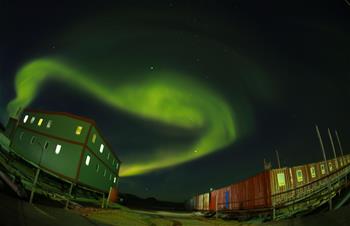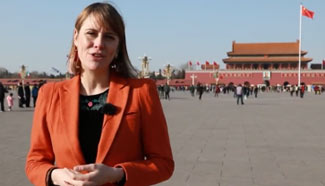LONDON, March 3 (Xinhua) -- While space explorers look beyond the planets as a new frontier, scientists at the University of Manchester Friday told how they are developing a new generation of satellites that will orbit closer than ever to earth.
The university is leading a multi-million dollar four-year project to develop smaller and cheaper satellites that can dodge space debris and improving the quality of images they can send back to earth stations.
Remote sensing satellites currently operate at heights of 500 to 800 kilometers above the Earth. But this means that observations of the ground must also take place over this range, either limiting resolution or requiring large telescopes to be used.
A 6-million-U.S.-dollar grant from the European Union's Horizon 2020 fund is allowing the research team to design new technologies to build satellites that can operate at 200-450 kilometers above the earth's surface, lower than the international space station.
Dr. Peter Roberts, Scientific Coordinator for the project, said: "Remote sensing satellites are widely used to obtain imagery for environmental and security uses such as agricultural land management, maritime surveillance and disaster management.
"If we are able to get satellites closer to earth then we can get the same data using smaller telescopes, or smaller and less powerful radar systems, all of which reduces the satellite mass and cost.
"But there are also many technical challenges which until now have been too great to overcome. This research tackles the problem on a number of fronts," Roberts said.
The atmosphere is denser the nearer to earth that satellites which means that drag needs to be minimised and countered.
To resolve this problem the team is developing advanced materials to test them in a new "wind tunnel" which mimics the composition, and density of the atmosphere at the lower height.
It will enable the team to test how materials interact with individual atoms of oxygen and other elements in the atmosphere at speeds of up to 8 kilometers per second. The ultimate aim, says the university, is to be able to use new materials to streamline the satellites.
They will also test the materials on a real satellite launched into these lower orbits.
The team will also develop experimental electric propulsion systems which use residual atmosphere as propellant, with the potential to keep the satellites in orbit indefinitely despite the drag acting upon them.












